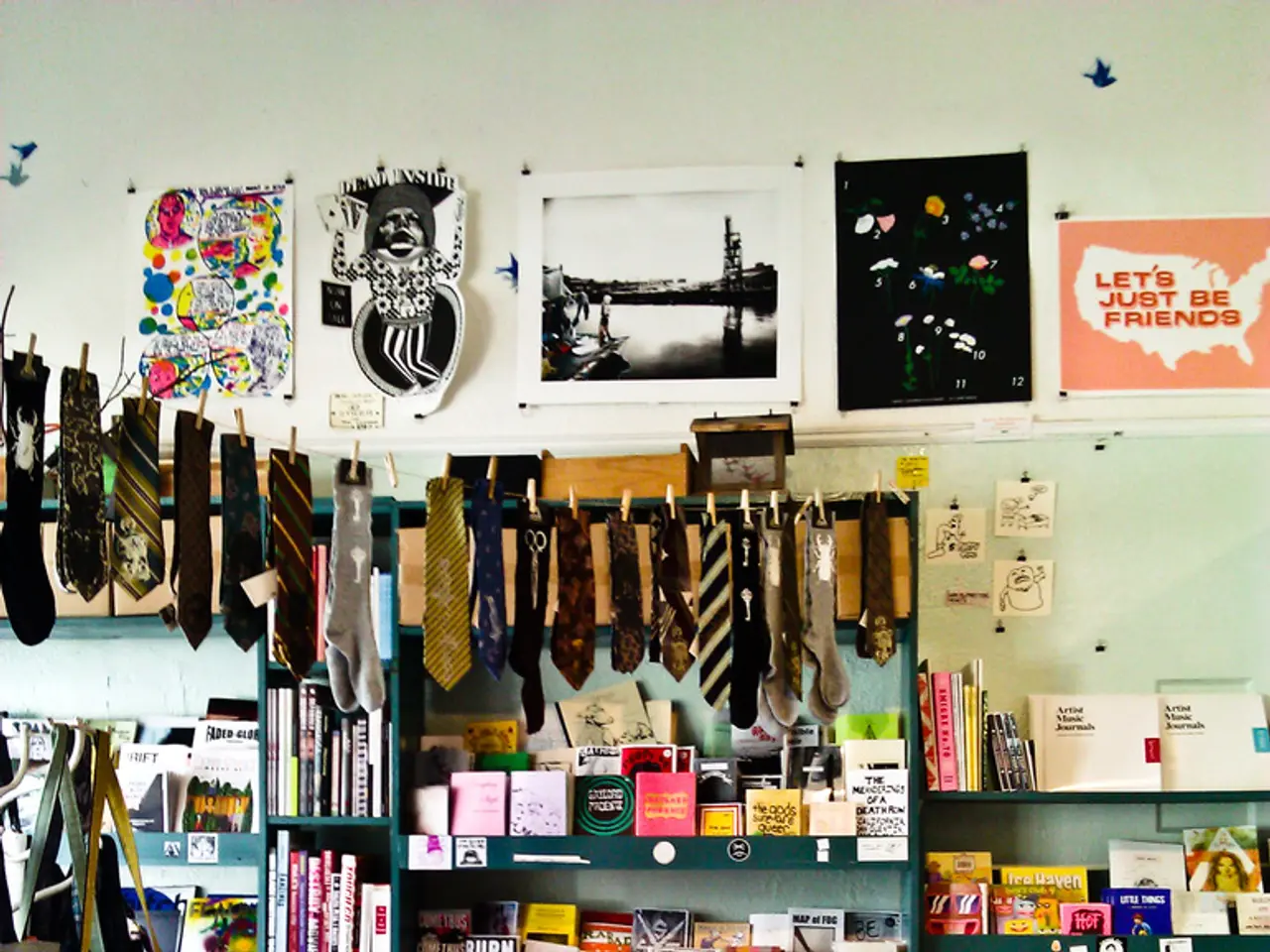Five Effortless Techniques for Displaying Artwork Without Causing Damage: A Non-Invasive Approach to Hanging Paintings and Sculptures
In the realm of home decor, displaying art can elevate a space and add a personal touch. However, traditional methods for hanging art can often result in damaged walls, particularly for renters or those who prefer to keep their walls pristine. This article offers a comparison of various methods for hanging art without causing damage to walls.
Adhesive Strips, such as Command Strips, Velcro Strips, and Picture Hanging Hooks, are a popular choice for their ease of use and damage-free nature. They are versatile and can support various weights depending on the type and brand. However, they may not be suitable for heavy objects, and some types can lose their adhesive properties over time or with certain wall types.
Hooks, including adhesive hooks and 3M hooks, offer another option for hanging art. They are generally easy to install and remove, making them a flexible choice. However, some types of adhesive hooks might leave residue or not adhere well to certain wall surfaces.
Picture Hanging Putty, a simple and inexpensive method, is ideal for temporary decorations. It does not damage walls and is easy to apply and remove. However, it may not be suitable for heavy objects, and it can be messy if not used correctly.
Tension Rods, particularly modern pressure-based systems, have evolved significantly. They offer stability without damaging walls, are suitable for various art pieces, and can be easily reconfigured for different spaces. Tension rods provide vertical display options, ideal for small spaces, and can support multiple artworks. However, ensuring proper installation is crucial for stability, and they can be more expensive than traditional hanging methods.
Shelves, whether floating or adhesive, provide a stable surface for art. They can often be installed without damaging walls if using a hidden bracket or a shelf with adhesive strips. However, they can be bulky and may require more space than other hanging methods.
Each of these options has its advantages and disadvantages, and the best choice depends on the specific needs of the space and the type of art being displayed. For example, light art pieces might benefit from adhesive strips or putty, while heavier pieces might require tension rods or shelves.
Tension rods and curtain wires fit snugly between two walls or surfaces, allowing for a flexible and stylish display. They are ideal for studio apartments or lofts. Leaning art pairs well with minimalist or boho-inspired interiors.
In conclusion, whether you're a renter or simply prefer to keep your walls intact, there are numerous methods available for hanging art without causing damage. By considering the weight and style of your art, as well as the space available, you can choose the best method to suit your needs.
- For temporary decorations, Picture Hanging Putty can be a simple and inexpensive method that does not damage walls, but it might not be suitable for heavy objects.
- Tension rods, especially modern pressure-based systems, offer a damage-free display for various art pieces, are suitable for small spaces, and can support multiple artworks, making them ideal for studio apartments or lofts.
- Shelves, whether floating or adhesive, provide a stable surface for art that can often be installed without damaging walls, but they can be bulky and may require more space than other hanging methods.
- Adhesive Strips, such as Command Strips, Velcro Strips, and Picture Hanging Hooks, are popular for their ease of use and damage-free nature, but they may not be suitable for heavy objects and can lose their adhesive properties over time or with certain wall types.




